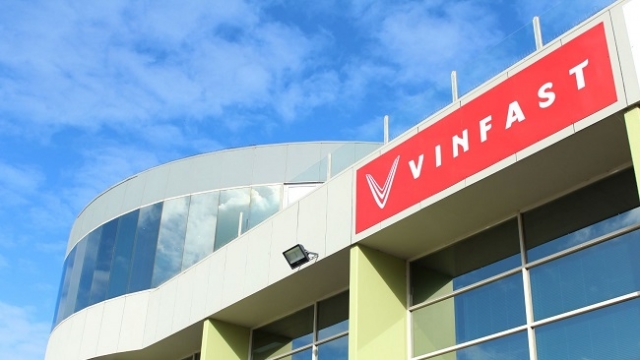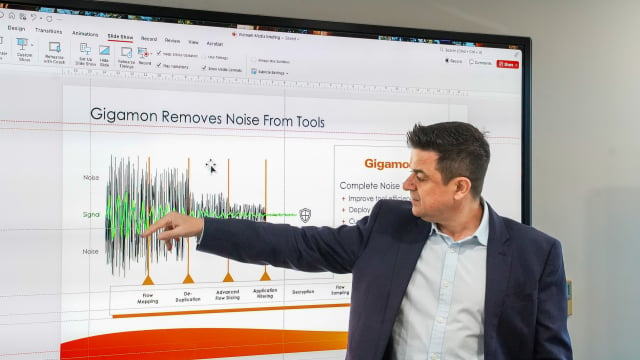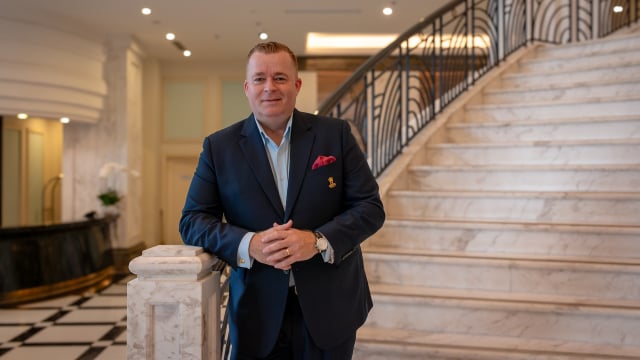Leader Talk
Five lessons Vietnamese startups can learn from VinFast
“For VinFast, the vision was a better future—so the cars we design and create are just part of that bigger vision,” said VinFast’s Global CEO Le Thi Thu Thuy.

Last September, I was, along with many other international journalists and influencers, invited to the Vingroup Elite Vietnam Tour - clearly a public relations effort to shore up confidence for VinFast, Vietnam’s very own car brand.
Convincing motoring journalists of the viability of the VF8 and VF9 as electric cars with the potential to do battle with Tesla, Ford, Chevrolet, BMW, Audi, and whatever other established electric vehicle brand out there was constrained to a couple of minutes of driving several examples of the two vehicles in a well thought of but the controlled environment inside the resort island VinPearl in Nha Trang city.
But the tour wasn’t organized just for the test drive. In fact, in its totality, it only took about 4 hours of the five days the media was in Vietnam.
Journalists spent more time seeing Vingroup property developments, checking out the VinUniversity, talking with its faculty and students, touring the plant facilities—body, press, paint and assembly, and battery shops—then making the plant managers available to talk and be tested, chatting with the top executives and understanding the ecosystem that makes VinFast what it is.
We were given ample time to talk shop about what goes on behind the 1,200 robots in the assembly plant, the ten-second mill time at the pressing plant, the 0.01-micron tolerance gap in the pressed sheet panels, the automated welding together of over 1,000-panel pieces and putting together 6,000 parts to build 38 cars per hour at full capacity or about 250,000 vehicles annually.
Then there was the chatting at the battery assembly plant where the innovation as to move from cellular to modular assembly of the EV batteries, and the fact the only things not made in the sprawling 900-acre (~365 hectares) factory are the chips, seat foams, electrical connectors, and tires.
The media tour was actually for us to see what goes on with the thinking and the culture, not just the company that builds the car or the car itself.
But why not focus on the test drive?
Le Thi Thu Thuy, Vingroup incumbent Vice-chair who is also VinFast’s Global CEO sees it this way.
“We are an unknown brand except in Vietnam. And even here, at the start, we needed to convince our own citizens of VinFast. That took a lot of work. We participated in the Paris Auto Show primarily for the Vietnamese market and did a good job showing our cars off on the world stage. The car is the most important end point of all of what we do. But the thinking, quality, and excellence, well that comes before the car,” Thuy told this writer, responding to a question in an exclusive sit down with international motoring and business journalists.
.jpeg)
The three-year-old VinFast can be considered a start-up. The unconventionality by which it operates is only matched by the speed by which the ideas are got to market.
For VinFast however, it is vital that who is behind it and what they do to create a great product, that is already well thought of, well built, and well tested and is in fact an excellent piece of machinery from the initial experience. There will, of course, be problems that will crop up along the way, but the strategy is set and the plan is in motion. And by every indication, it is unstoppable.
In this corporate attitude and culture, confidence in the brand is focused. And where start-ups and entrepreneurs can learn from the chart, maybe if they even maybe unconventional ways VinFast has spectacularly created almost from scratch a line-up of electric vehicles set to meet their customers in what are the world’s most notoriously discerning car markets—California in North America and Germany, France and the Netherlands in Europe.
INNOVATIVE VISION, NOT JUST INNOVATION IS REQUIRED
VinFast developed their vehicles on what could be only seen by untrained eyes, as a common direction. Take a car, slap in a motor, upload software, and a battery, and inflate four tires, that’s it. In the case of VinFast, that is far from the truth. The company’s dream was to create cars and scooters for the Vietnamese. This resulted from a 360-degree idea of providing housing, healthcare, education, and retail access to Vietnamese, the Vingroup built housing and schools, hospitals, and stores to complete the cycle—mobility, with scooters and cars. Then when this was done, it shifted its sights to an even more complete future, taking in sustainability as a core vision, and started going electric.
“For VinFast, the vision was a better future—so the cars we design and create are just part of that bigger vision,” Thuy explained.
DO IT FAST AND DO IT RIGHT
When VinFast was founded in 2017, the automotive world in Vietnam was watching it with concern and skepticism. How could a car company with little or no experience bring out a car for the Vietnamese market? It takes anywhere from 3 to 5 years for traditional car makers to develop vehicles and systems, yet in 21 months, VinFast rolled out its first auto.
When VinFast did the impossible, the skeptics turned their sights on sales and aftersales—and indeed there were problems with the first cars but VinFast has already prepared for it with parts and service training, recalls, and overcoming every problem with a solution, almost instantly. A keen lesson for startups here. In a market that is fertile with ideas keen to make it to market, developing quickly but cautiously, with a mindset of “doing it right the first time,” is key.
HIRE PEOPLE BETTER THAN YOU ARE
Startup founders are usually afraid of having people better than themselves because they can eventually usurp power over the business. VinFast believes at every level, bringing in those with the brightest ideas, or the best attitudes to complete the work needed to be done at a certain time is crucial for growth.
When Thuy took over as VinFast global CEO she was already well-versed in finance, management, and globalization, having managed the Vingroup conglomerate as vice chairwoman for over a decade. In turn, her own hiring policy for top executives includes the ability to not only bring something new to the table but decisively act on it. By doing so she clears the clutter towards VinFast becoming a global electric vehicle brand.
“Learning from those who have richer experiences than you is not only educational but validating too,” the VinFast chairwoman says.

CONVERT CRITICISM AND SKEPTICISM INTO OPPORTUNITY
One lesson the whole VinFast ecosystem faced is the slew of criticism and skepticism from journalists, customers, and the automotive community in general about this newbie car maker, whose dreams seem to be bigger than what they can handle. Every kind and manner of criticism has been hurled against VinFast.
During the media conference at the event, Thuy replied to a question on this skepticism by saying that this kind of skepticism is understandable. And to survive and make use of it all criticism must be taken constructively (even the worst kind) and any skepticism an opportunity to be better. So when the Vietnamese themselves were skeptical about VinFast cars, the company proceeded to be present on the world stage—participating in the likes of the Paris Auto Show and the Los Angeles Auto Show—to show the skeptical Vietnamese that what they have available for them are world-class vehicles. The result? Skepticism converted into sales, with VinFast now becoming the country’s best-selling car.
DON’T BE SCARED TO LET PEOPLE GO
The company does not hide the fact that it has had a series of CEOs—all foreigners—from the time it started until now. These seasoned men contributed to the company’s growth. In July just this year, the company let four top executives go. Its last CEO, Michael Lohscheller, left VinFast to return to Europe due to personal reasons. The movements did not faze the company. The men who left, whether it was for professional or personal reasons, contributed to VinFast and the company did not let go without just compensation.
“When it is time to let one go, one must let go honorably. This is not unique to VinFast. In any company, changes in management happen because of the need to move forward,” Thuy advised.
QUIT TO START SOMETHING NEW
This does not sound like good advice, but it is a staple practice at the Vingroup—as a tool of innovation, not for survival. The Vietnamese conglomerate exited from the retail business, dissolving its electronic store chain VinPro to focus on smartphone production. But it didn’t leave that footprint, it created a super app to take over the retail business and provide fintech and digital marketing services. VinFast dropped the production of internal combustion engine cars in favor of all-electric vehicles to ensure it meets its own corporate mission of net zero carbon. Quitting is another form of transformation.
“It really isn’t quitting when you give up something to move to the next one,” is another stellar piece of advice from the Vingroup chairwoman.
FAILING WITHOUT FAILURE
In a question to her during the conclusion of the VinFast media tour on failing, Thuy sent out this nugget of wisdom when I asked her about the uphill battle the new electric vehicle brand will face in the notoriously critical and skeptical markets where VinFast chose to launch their vehicles. “Failing is an opportunity to be better—if you know how to use it. We aren’t afraid to fail because we are ready for it to become better.” Think about it. That isn’t a failure at all.
VinFast opens office in Australia
Vietnam turns semiconductor vision into action
The global semiconductor industry is being reshaped by geopolitical tensions, shifting supply chains, and the surge of digital technologies.
Cutting red tape in APA approvals to speed up tax negotiations
The change in APA approval authority is expected to shorten processing time and enhance business proactiveness in international tax negotiations.
Enterprise cybersecurity is under threat from the inside
As hybrid cloud systems grow more complex, Vietnamese enterprises are struggling to detect cybersecurity threats moving laterally within their own networks.
Breakthrough for the international financial center ambition
The submission of the draft resolution on Vietnam’s international financial center to the National Assembly heralds a new developmental era for the country.
How leadership philosophy redefines hospitality in Nha Trang
More than just running a 5-star resort, Kristian Petersen is redefining the art of hospitality with a humane and sustainable leadership philosophy.
When organic becomes an inspiring wellbeing lifestyle
For Tyna Huynh, co-founder of Drinkizz, organic is not just a food choice but a way of life that fosters a deep connection between people, nature and community.































![[Hỏi đáp] Bỏ thuế khoán từ 2026: Hộ kinh doanh có cần thuê kế toán?](https://t.ex-cdn.com/theleader.vn/192w/files/news/2025/12/03/ho-kinh-doanh-1120.jpg)





![[Hỏi đáp] Từ thời điểm nào hộ kinh doanh không được nộp thuế khoán nữa?](https://t.ex-cdn.com/theleader.vn/192w/files/news/2025/12/03/ho-kinh-doanh-0107.jpg)
![[Hỏi đáp] Bỏ thuế khoán: Hộ kinh doanh sẽ nộp thuế như thế nào?](https://t.ex-cdn.com/theleader.vn/320w/files/news/2025/12/03/bo-thue-khoan-0116.jpg)
![[Hỏi đáp] Hộ kinh doanh bị phạt thế nào nếu kê khai sai?](https://t.ex-cdn.com/theleader.vn/192w/files/news/2025/12/03/phat-ke-khai-thue-0122.jpg)



